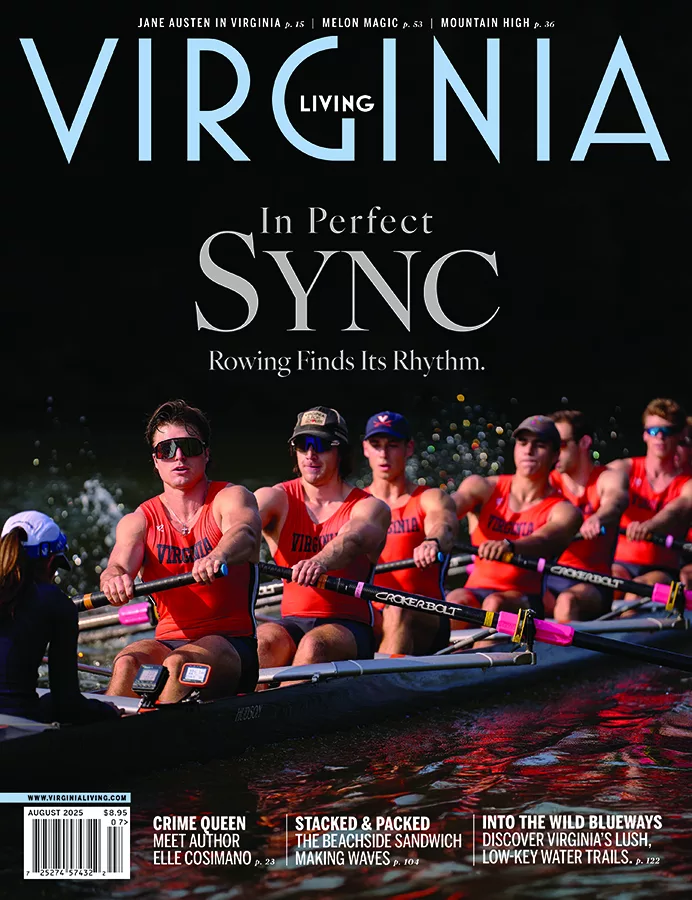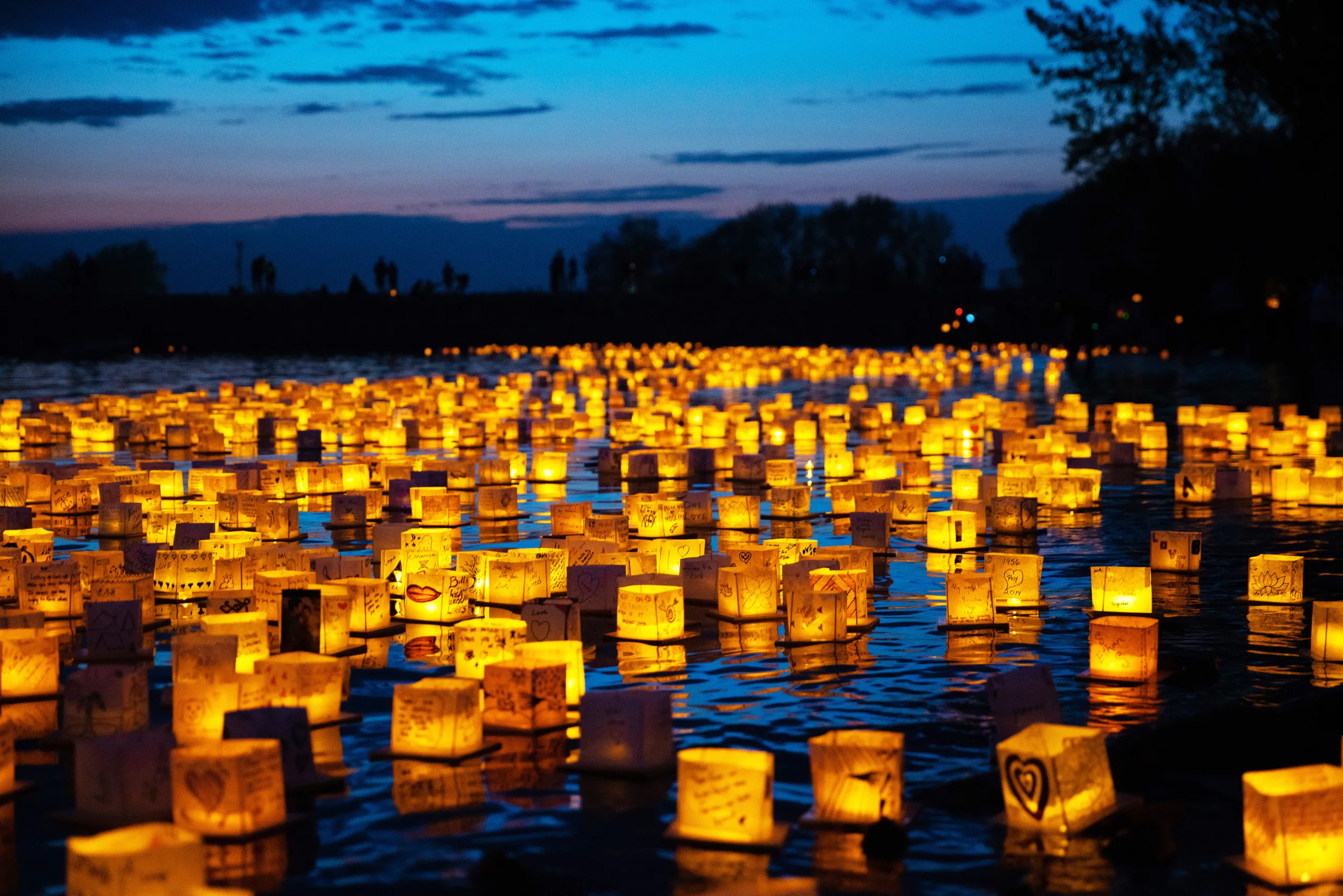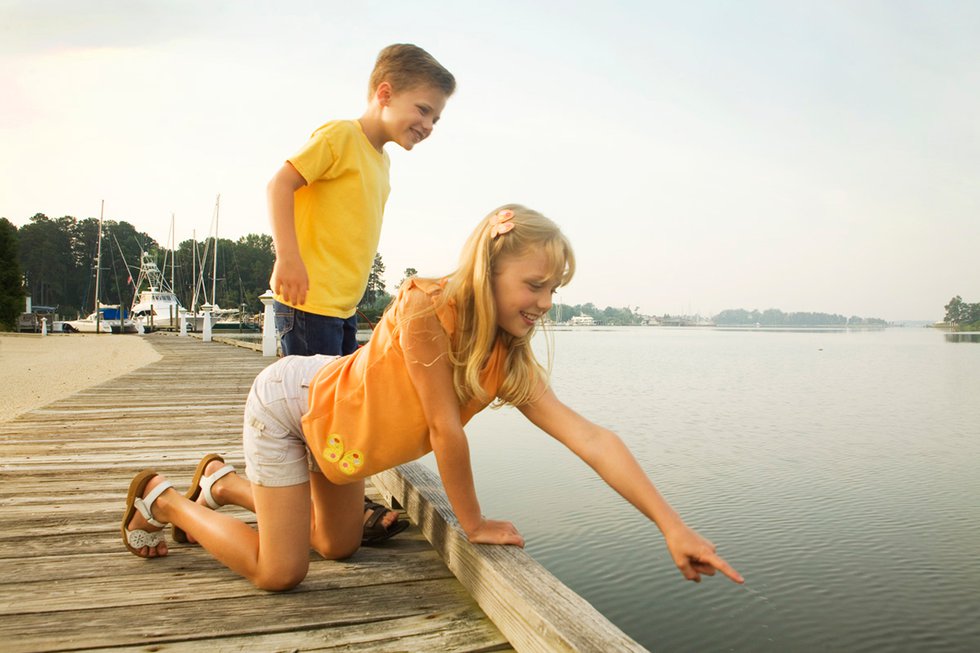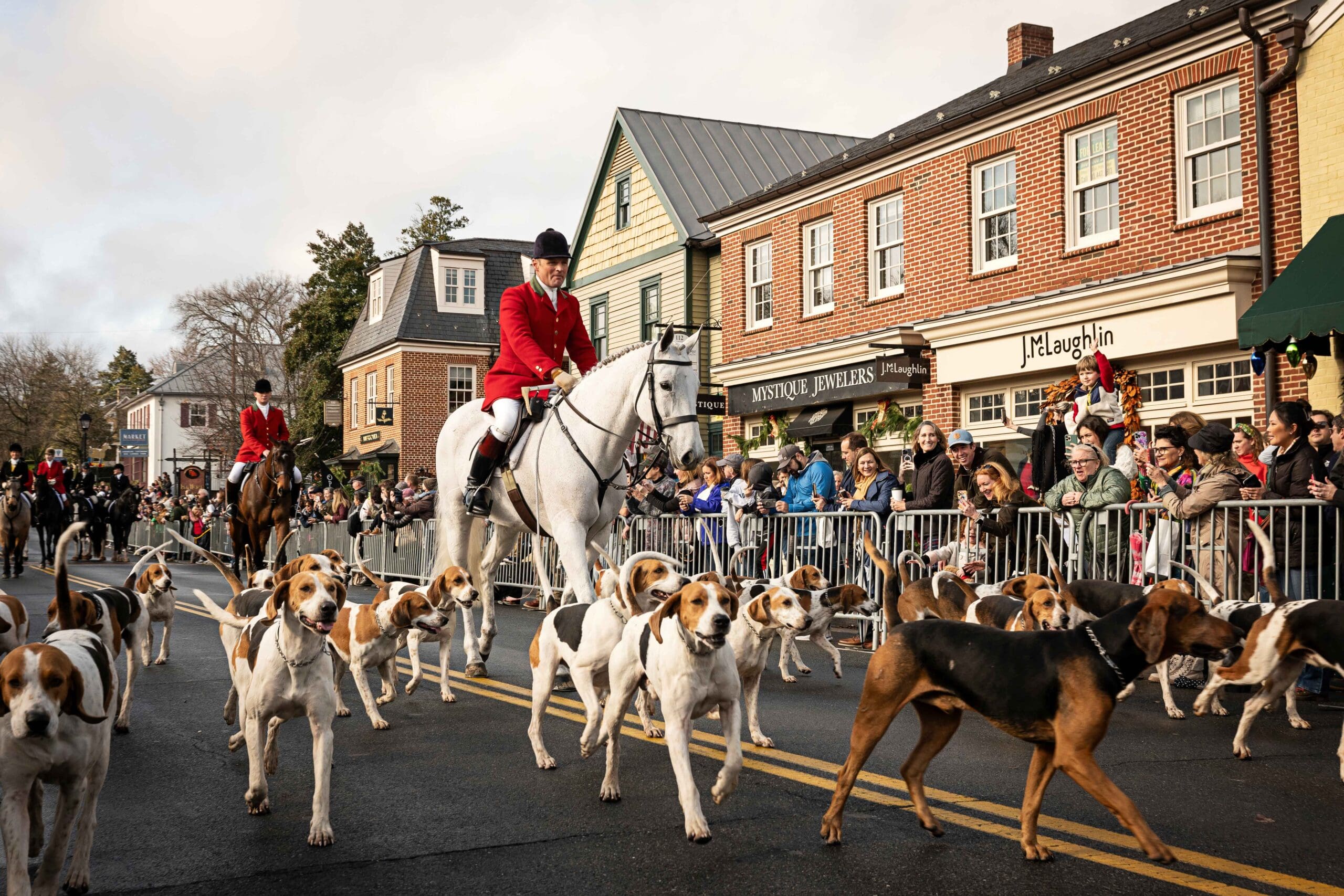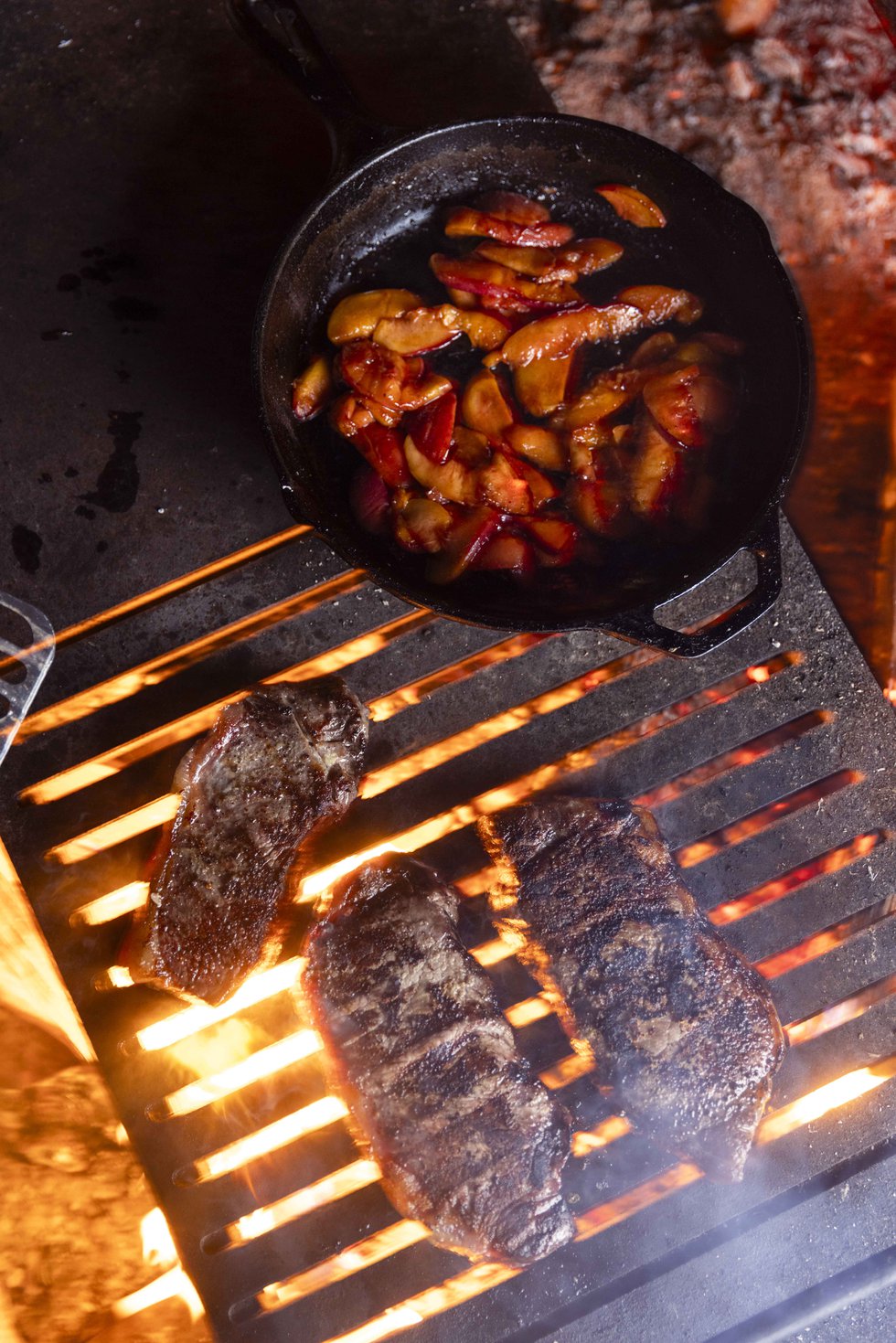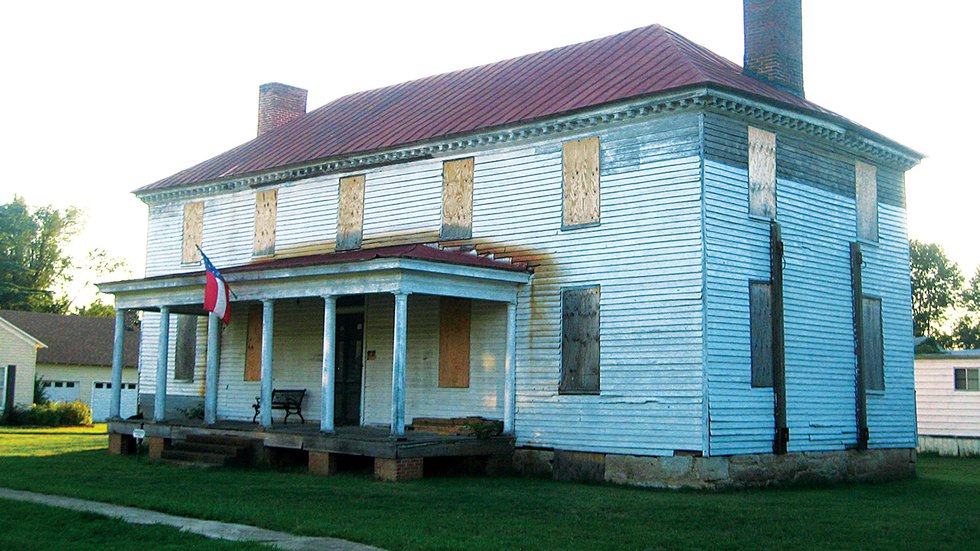Revitalization in Cape Charles has helped establish the new Eastern Shore.

Cape Charles Yacht Center and harbor.
Photography by Mark Edward Atkinson
Pulling onto the main drag of the 1,000-person town of Cape Charles, I’m convinced I’ve taken a wrong turn. A row of new brick buildings advertising high-end shops and two floors of luxury loft apartments seem to have sprouted from a formerly abandoned railyard. Behind them, long-decommissioned tracks host a museum of painted historical train cars. Across the street, once-crumbling, century-old Victorian facades have nearly all been restored.

Black Narrows Brewing Company in Chincoteague.
Passing down the seven blocks of Mason Avenue, I espy an artisan jeweler and women’s clothing retailer, historic theater, craft distillery and cidery, chocolatier, art gallery, candy store, two boutique hotels, three new restaurants, two ice cream parlors, and a purveyor of street-legal golf carts. And that’s just at a glance.
What was, at the time of my last visit, a disheartening example of municipal decay is now a poster child for revitalization. “The change has been tremendous, and it has happened very fast,” confirms the general manager of Hotel Cape Charles, Jawn Dolph, 45. We’re lounging on chic leather sofas in the fabulously renovated 101-year-old lobby, enjoying glasses of signature Church Creek Chardonnay from nearby Chatham Vineyards. The room has high ceilings, tall windows, dark stone tiles, minimalist furnishings, indirect light fixtures, and breezily colored walls punctuated by abstract landscapes. With 22 uniquely curated guestrooms, an outdoor courtyard, second-floor veranda, and numerous sitting areas, the place feels like a cross between a casually upscale social club and a beachfront spa.

Watson’s Hardware in Cape Charles.
Dolph and his wife moved here from Ohio in May 2017. “Our kids were in college, and we wanted to go coastal,” he elaborates with a chuckle. But the couple was looking for something less resort, more low-key. Though considering Maine, they visited Cape Charles. “It was like finding a magic portal to the 1950s,” says Dolph. “There were these cool old buildings and the people were just so friendly. It was a warm, tightknit, Mayberry-esque community. And the beach was a hundred yards down the road!”

Mason Avenue in Cape Charles.
Since the Dolphs arrived, the town has added more than 150 hotel rooms. Beaches have been rejuvenated, gardens restored, bike paths installed, and parks built. Tract after tract of historical homes have been renovated. Seventeen new businesses have opened, and more are in the pipeline. “Folks who haven’t visited for a while come back and are blown away,” laughs Dolph. Like me, they sense the place is finally catching up to its potential. What was previously a nifty stopover en route to Norfolk or Chincoteague has become a destination in itself. “I know for a fact people are staying longer, returning more frequently, and recommending us to their friends,” asserts Dolph. “For many, Cape Charles has become more than a vacation spot; we’re their home away from home.”
The growth has attracted statewide attention. In July 2018, Governor Ralph Northam conducted commemorative ribbon-cutting ceremonies at 14 new businesses. Flanked by a parade of more than 30 golf carts, the tour concluded at the recently opened Cape Charles Brewing Company. There, the governor praised residents for spearheading a boom in regional tourism.

Mills and Jon Wehner at Chatham Vineyards.
Buoyed by Cape Charles, the Eastern Shore has been the Commonwealth’s fastest growing tourist region for three of the past four years. Shore-wide, annual visitor spending has risen by 22 percent since 2011—totaling $274 million in 2016. The influx has boosted tourism-related payrolls by nearly 30 percent and created more than 500 new jobs. “My wife and I thought we were moving to a sleepy little town at the edge of the earth,” jokes Dolph. Accustomed to living in cities, they expected to sacrifice cultural amenities. “But once we got here, it was obvious: Cape Charles is experiencing one heck of a renaissance.”
And like a rising tide, the effects are spreading across the Shore.

Aerial view of Chincoteague.
The Eastern Shore’s primary selling point has always been its wildlife and rugged natural beauty. Unlike most coastal destinations, the peninsula boasts more wild beaches than developed ones. Fourteen uninhabited barrier islands and more than 75 miles of ocean shoreline are protected by state and federal agencies. On the Chesapeake Bay, in addition to Kiptopeke State Park, there are five natural area preserves. Together, the holdings total more than 133,000 acres.

Wallops Island rocket launch.
The protections have fundamentally shaped development along the Shore. “Back in the 1950s and ’60s, developers wanted to build bridges between the islands and turn the coastline into one big, extended version of Ocean City,” says Dave Burden, owner of an outdoor adventure watersports company, Southeast Expeditions, which is headquartered in downtown Cape Charles and offers aquaculture and kayaking tours, jet-ski rentals, and kite-surfing lessons throughout the Shore. “But in 1968, government agencies swooped in and secretly bought up all the land,” he continues. Although controversial, the move established one of the largest coastal nature preserves in the U.S. “Because of that, we’re surrounded by one of the most pristine, diverse, and unique coastal ecosystems in the world. And it’s super convenient to explore!”
Burden’s testimony is informed by travel. He elaborates over local oysters, clams, and fish tacos in The Shanty—a harbor-fronting bar Men’s Journal named one of the continent’s 24 coolest in 2014. Before moving to Cape Charles in the late ’90s, Burden lived in San Francisco. A friend and native convinced him to visit and kayak around the Shore. “By then I was a pretty seasoned paddler,” says Burden. “I’d kayaked in Maine and the San Juan Islands in Washington state, Africa, the Caribbean, South America, other places. But none of that touched what I found here.”

Eddie Bell at Cushman’s Landing
Oysterman Eddie Bell.
Salt marshes contain miles of creeks and fascinating habitat rife with clam, mussel, and oyster bars. A three-mile paddle leads to barrier islands and beaches rarely touched by human beings. The fishing is exquisite. With its position along the Great Atlantic Flyway, the area is one of the world’s most important stopovers for migratory birds. On an ideal outing, paddlers might spot as many as 406 avian species. Best of all, the waters can be enjoyed by families and master kayakers alike. “I was awestruck,” Burden recalls with a laugh. “It took about two days to decide I was going to move to Cape Charles and start an adventure kayaking business.”

Craddockville farm stand.
Although Burden has been successful—Southeast Expeditions has expanded to three locations, and bookings for tours have nearly quadrupled since 2010—he says getting there was a long haul. Not so long ago, it was all he could do to expand his business, make payroll, and survive the winters. Beyond Chincoteague, there were few amenities to hang a vacation on and little support for those trying to create them. “For a long time, it was a serious catch-22,” explains Tim Brown, executive chef and owner of Hook-U-Up Gourmet. A former instructor at Johnson & Wales University, the 55-year-old opened the region’s first true culinary inn, Mariah’s at Tower Hill, in 2002. Unfortunately, the venture was ahead of its time. “We quickly realized we were fighting an uphill battle,” Brown continues. With a shore-wide population of just 50,000, he needed to attract tourists. “But when we asked [the chamber of commerce] to let us put a sign on U.S. 13,” he says, referring to the peninsula’s arterial corridor, “they basically said, ‘That’s going to junk up the highway; it isn’t necessary.’”
Brown hung on, eking out a living, until the recession forced him to close Mariah’s in 2009. Burden kept afloat during the downturn by living on a sailboat and renting his house through Airbnb. Both say that, until recently, for most of the Shore’s tourism-related businesses, such hardships were par for the course.

Oyster roast at Chatham Vineyards.
“The Shore was traditionally fairly isolated and, generally speaking, had a pretty rural mentality,” explains Eastern Shore Chamber of Commerce executive director Robie Marsh, 39. Overshadowed by agriculture and aquaculture, metropolitan-style tourism tended to be unwanted or viewed with suspicion. “We had the nature, but few amenities that made people want to stay, eat, and shop,” he says. “In the ’80s, ’90s, early 2000s, if you weren’t going to Chincoteague, you were probably here to hunt, fish, bird—and that was about it.”

Hook-U-Up Gourmet.
Around 2010 came a watershed moment. Driven by a new generation of entrepreneurs and residents, as well as burgeoning state and national trends, leaders effected a total overhaul of the region’s tourism industry. The result was a rebranding initiative that sought to link existing cultural assets with eco- and agritourism opportunities. The Eastern Shore of Virginia Tourism Commission invested in a new website that introduced would-be visitors to off-the-path staples, like the fabulous Charlotte Hotel & Restaurant and Eastern Shore Watermen’s Museum and Research Center in the historical fishing village of Onancock. “The strategy paid off in a big way,” says Marsh. The influx of new visitors—and the revenue they brought with them—bolstered confidence. Marsh says officials, business leaders, and community members came together to discuss ways to build on the success. Together, they looked to fill niches and improve visitor experiences.
“A great example is what has happened with craft beverages,” says Dan Davis, owner of Captain Dan’s Around the Island Tours. A former commercial fisherman, the third-generation Chincoteague native began offering pony-sighting pontoon boat tours around Assateague Island and the 14,000-acre Chincoteague National Wildlife Refuge in the mid-2000s, featuring lore-studded tales of oyster watch houses, poaching, pirates, hurricanes, old-time island life, and, of course, the famous herd of 150 wild ponies. “Customers kept asking me about local breweries and distilleries, but I had nowhere to send them,” continues Davis. He relayed the interest in local chamber of commerce meetings. “Next thing you know, Jenna and Josh Chapman were opening Black Narrows, the Shore’s first brewery. Then came the distillery, cidery, and brewery in Cape Charles. And now there’s another brewery slated to open in Eastville.”
Additionally, Burden partnered with Chatham Vineyards to create a kayak vineyard tour. Davis is happy to have new experiences to recommend. “I’ve gotten numerous calls from customers thanking me for suggesting they pay a visit to Cape Charles,” he says. “To me, that’s huge. When people connect like that, it tells me they’ll be coming back. And also, they’re gonna go home and tell their friends.”

The Shanty.
Noting the shifting economic climate, Brown launched his latest venture, Hook-U-Up Gourmet, in 2012. Initially, he was cautious. “I spent two years just doing catering,” he says. “In 2014, we added lunch. Then, in 2016, I dropped all that and got back to doing what I love.”

Cape Charles Distillery.
The result is a 29-seat casual fine-dining gem that feels more Brooklyn than rural Virginia. Brown specializes in giving local, seasonal produce and seafood the rock star dinner treatment. After a day-trip kayaking with Burden in the Magothy Bay State Natural Area Preserve, I indulge in an order of cornmeal encrusted ahi tuna served over Hayman sweet potato, house-made country ham and crab ragout, and braised spinach. A bite yields a mind-meltingly sumptuous flavor bomb—one of the extraordinary variety that nets chef commendations from the James Beard Foundation.
The success has Brown considering scaling up to a location on the Cape Charles Town Harbor with about 20 more seats. “I’ve lived here long enough to have seen trends come and go,” he says. But this latest wave of development? Like Marsh and Burden, Brown is confident it’s here to stay. “I’ve watched the Shore morph into something new and utterly unique,” he says. “And I, for one, am excited to see what’s coming next.”
This article originally appeared in our April 2019 issue.
